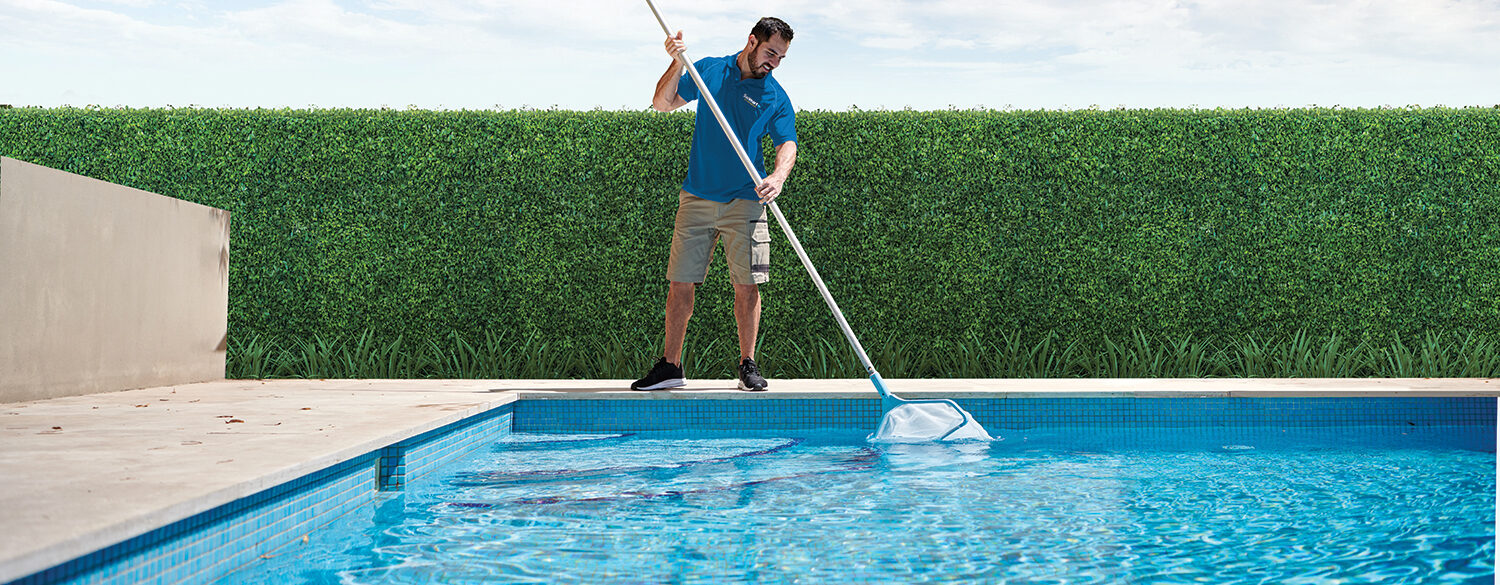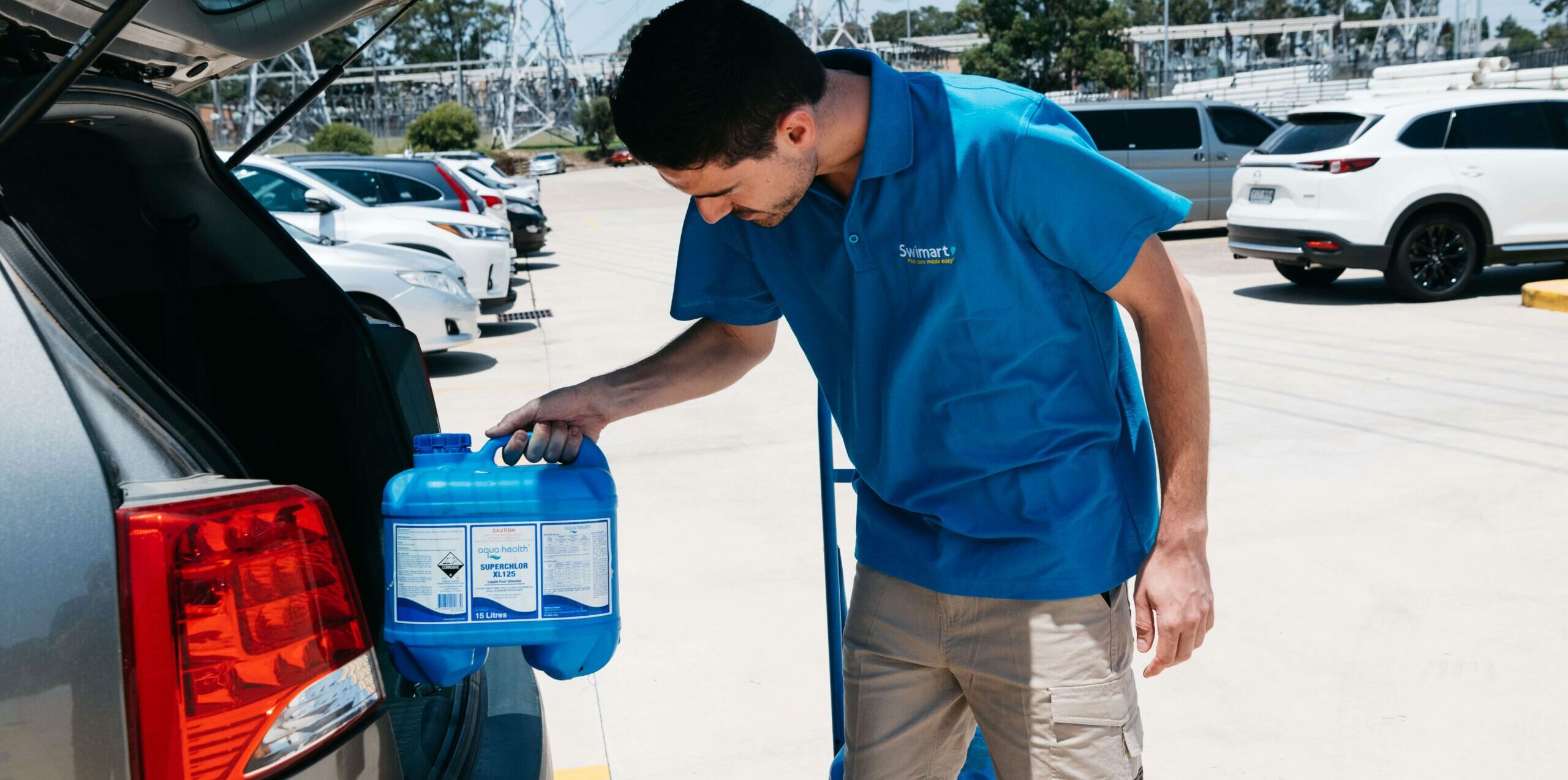DIY Tips
Born Again
10 July 2015
If the days of enjoying your pool are long gone thanks to crumbling coping, faulty equipment and an ageing interior, then it’s time to think about a makeover – especially with the warmer months looming on the horizon. Breathing new life into your poolscape can be as simple as replacing old waterline tiles, or extensive as draining the water and starting with a clean slate.
Born Again
Bring your old concrete pool back to life with a simple retrofit or full-scale renovation
Pool professionals around the country are seeing an increasing number of deterioration in pools built in the 1970s and 1980s that are in desperate need of an upgrade. Common problems include delamination between paving materials and bedding cores, shrinkage and growth in terracotta tiles, bedding courses separated from concrete substrates, and cracks in skimmer boxes caused by movement of the pool shell.
“There are a number of design features that also date these pools, such as ornate waterline tiles, ageing
Pebblecrete surrounds, and a lack of atmospheric lighting,” says John Storch, from A Total Concept Landscape Architects and Swimming Pool Designers.
One key feature at the top of many renovators’ list is to upgrade the dated kidney or freeform shape into a more contemporary, streamlined silhouette.
“It’s always cheaper to build in the pool than knock walls out because if you start punching walls out, that’s when the structure becomes compromised,” John explains. “It’s much easier to alter the shape within the pool by keeping the perimeter rather than expanding the pool. You basically knock the bond beam off and pour a new pool within it. The classic kidney or B-shape pools built back in those days usually have three straight sides, so you pour a new wall at the narrowest point to make it more geometric.”
While it’s tempting to simply replace one pool product with another, the right pieces of equipment will help reduce water consumption, energy costs, maintenance time, and operating costs – providing you understand the limitations of the existing plumbing, water returns and suctions.
Back in the day, the standard way to illuminate a swimming pool was to put two massive, 240-volt floodlights at each end of the pool. Not only was this method visual overkill, but it was also highly invasive when swimming at night.
Thankfully, manufacturers have come up with a range of stylish brackets and joining techniques that enable pool owners to install a more subtle lighting system. If you are simply replacing a faulty pool light, most of the time the cable can be brought up above water level, a new light fitted, and then the light sinks down and is mounted back to the pool wall.
Pools generally only need to be lowered and emptied when the old lights need new brackets or housings fitted, or when an owner wants to install a light in a completely new spot.
Thankfully, those 240-volt lights have been replaced by extra low voltage requirements, which not onlylook better but also are significantly safer. Today’s pool lights are commonly 12 volt AC (alternative current) or 30 volt DC (direct current), though the latter is less common.
Renovations can be a bit like opening a can of worms – what starts as a simple rust problem can lead to major structural issues because the lining of the pool has been compromised for too long. Consequently, some pool owners soon find out that sometimes it’s just as expensive to renovate a pool as it does to build a brand new one!
POOL RENOVATION CHECKLIST
- Make sure you know the history of your pool, its age, and type of construction. If your old pool is concrete you have the choice of either tiling it or rendering it. You can also upgrade the filtration system and equip the pool with a modern automatic cleaner and automatic sanitising system.
- For existing pools undergoing major structural changes such as cutting into the walls or floor, it may be necessary to hire a qualified engineer. It is also wise to check with your local council with requirements for such work.
- Ensure the old pool surface is sound before a new one is applied. That would require some stripping away of the old surface.
- One of the most common problems encountered in pool renovation is rust, but with correct methods and procedures most rust that is visible can be taken care of and doesn’t reappear. However, no guarantee can be given that rust will not appear at some stage in the pool’s life after renovation. It’s important to uncover as much rust as possible during the preparation stage of the pool renovation.
- If renovating a very old pool, check the suction points (many will have single suction points, or those deemed risky, so you will need to install dual suction points for safety purposes)
- One of the key steps in the renovation process involves draining the pool and
removing the hydrostatic valve. This releases pressure from subterranean water so that the pool is protected from floating. It’s a bad idea to undertake this during periods of wet weather.
- Before you finalise the contract with a pool builder, make sure you and your builder are on the same page in terms of expectations. Often things like new landscaping, lighting, an updated filtration system and pool covers are left off a contract.
TOP TEN RENO REQUESTS
- Replace or upgrade pool interior
- Repair cracks due to poor workmanship
- Replace coping and paving
- Add water features
- Add stairs, ledges and spa
- Shorten pool length
- Install new plumbing
- Upgrade filtration and sanitation equipment
- Install pool cover
- Upgrade fencing to frameless glass
© Photos provided by Scott Brown from Landscape Design.


 AUS
AUS NZ
NZ 


